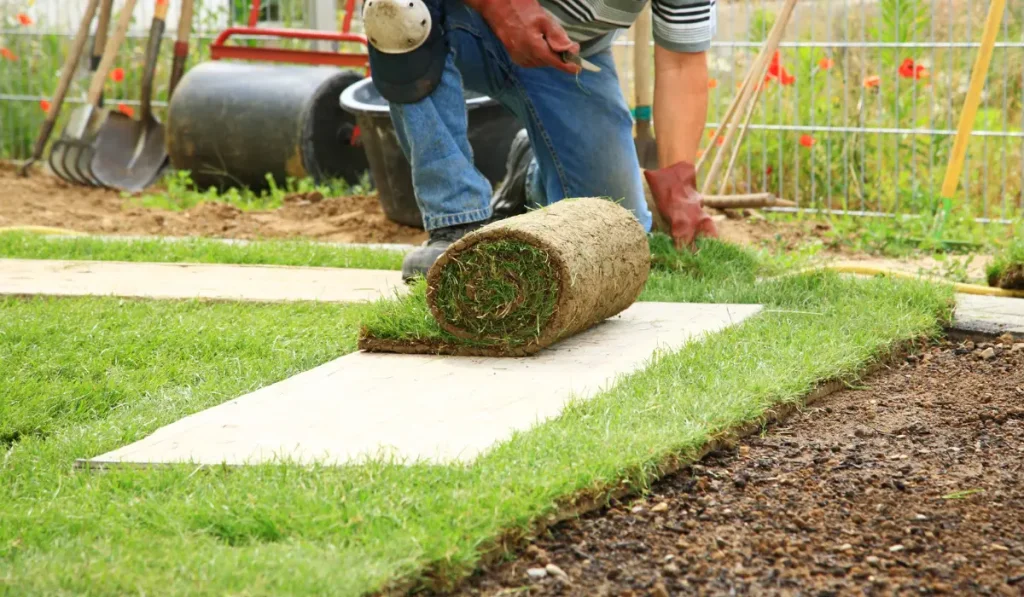Did you know that even the mild winters of Los Angeles can affect your lawn’s health? Caring for your winter lawn can involve simple practices to keep it thriving.
From understanding the effects of colder temperatures to mastering seasonal lawn care habits, diving deeper reveals lasting benefits. Read on for practical tips and insights.
Key Takeaways
- Mowing your lawn slightly taller in Los Angeles during winter helps protect the grass roots from cooler temperatures.
- Water less frequently in cooler weather, aiming for one inch per week to prevent overwatering.
- Aerating your lawn before winter can ensure proper root growth by improving air and nutrient penetration.
- A potassium-rich fertilizer in late fall can strengthen your lawn for the colder months ahead.
1. Mow Your Lawn to the Correct Height
Keeping your grass slightly taller during this period in Los Angeles can help protect roots from cooler temperatures. Generally, two to three inches of height is ideal for maintaining fescue and ryegrass.
Keep lawn mower blades sharp for a clean cut. Avoid cutting too much at once; it’s better to trim grass in small increments. For example, St. Augustine grass needs about 3.5 to 4 inches, ideal for winter.
2. Water Wisely as Temperatures Drop
Cooler weather reduces evaporation, allowing you to water less frequently while making sure grass receives adequate moisture. Sprinkler systems should be adjusted to prevent overwatering, a common issue in winter.
Morning is the best time to water your lawn to reduce the risks of fungus. Pay attention to rainfall and adjust watering schedules accordingly to avoid saturation. Lawns need about one inch of water weekly during this season.
3. Aerate to Promote Root Health
Aeration is a valuable process in maintaining robust lawns. It involves perforating the soil to allow air, water, and nutrients to penetrate the roots. Performing this task while preparing for winter ensures that roots can grow deeply.
Using a core aerator is effective, but lawn care services are available for larger areas. Focus on high-traffic areas, where soil compaction is most severe, for the greatest effect. It’s a proactive step for healthy grass come spring.
4. Fertilize for Winter Lawn Strength
Applying fertilizer in late fall sets the stage for your lawn’s resilience during the cooler months. Choose a potassium-rich formula to help your grass withstand drought and colder temperatures. Winterizing products can further lock in valuable nutrients.
For consistent results, use a spreader to distribute the fertilizer evenly, preventing patchy growth. Tailoring the fertilizer type to the unique needs of your grass will support its vibrant color and health, giving it the nourishment it needs.
5. Overseed Bare Patches with Winter Grass
Overseeding adds new grass seed to existing lawns, filling in bare or thinning patches. For example, sowing cool-season grass like bluegrass or ryegrass helps rejuvenate lawns, boosting their thickness and look.
To get the best results, dethatching beforehand clears out old thatch, allowing better contact between the seeds and soil. After seeding, regular watering encourages the seeds to germinate and establish a strong foundation.
6. Rake Away Leaves and Debris Regularly
Leaf removal and grass clipping clean-up are just as important during the winter months as in the fall. Accumulated leaves can trap moisture, fostering mold and disease. With frequent raking, you can expose the grass to sunlight, which is useful for warm-season grasses like Bermuda grass.
7. Check for Weeds and Address Early
Weeds don’t vanish entirely during winter, and staying observant can make a big difference. They can quickly become a major problem if not handled before spring arrives. Applying weed control like a pre-emergent herbicide can help curb these intruders early on while adding a layer of mulch around garden beds.
8. Reduce Foot Traffic on Dormant Grass
Dormancy is a natural part of grass life cycles, especially for those popular in Los Angeles landscaping. Reducing foot traffic in the winter can prevent soil compaction and damage to the grass blades.
Frequently Asked Questions
How can I keep my grass green during the California winter?
Californians can keep grass vibrant with regular watering and occasional fertilization using a winter-specific product. Aeration helps, too, by allowing water and nutrients to penetrate the soil. Mowing less frequently will also prevent stress on the grass.
Is there anything special I need to do for my lawn in the winter months?
Lawn care routines don’t stop. Removing leaves and debris helps avoid disease, and occasionally, dethatching can be beneficial. Checking for pests that might damage turf can save headaches later.



